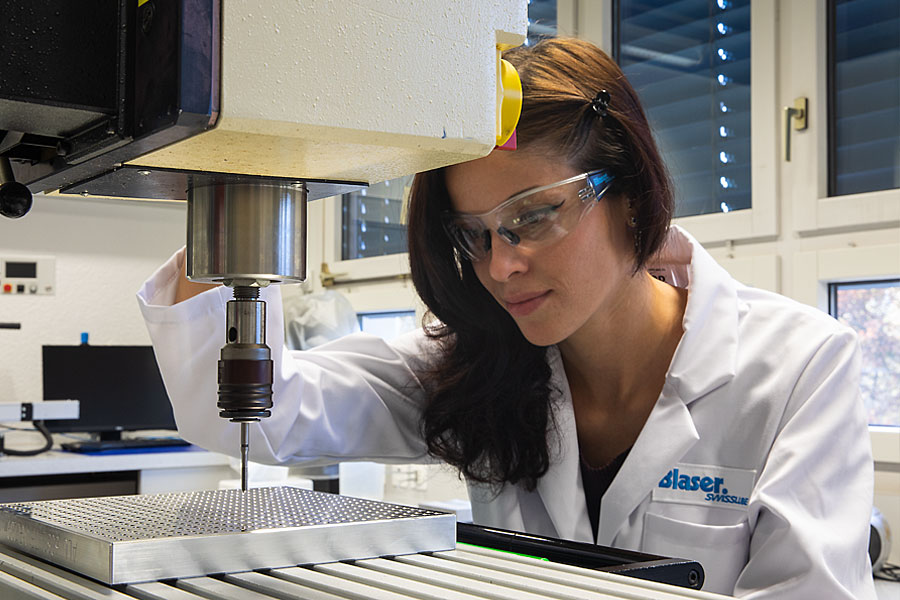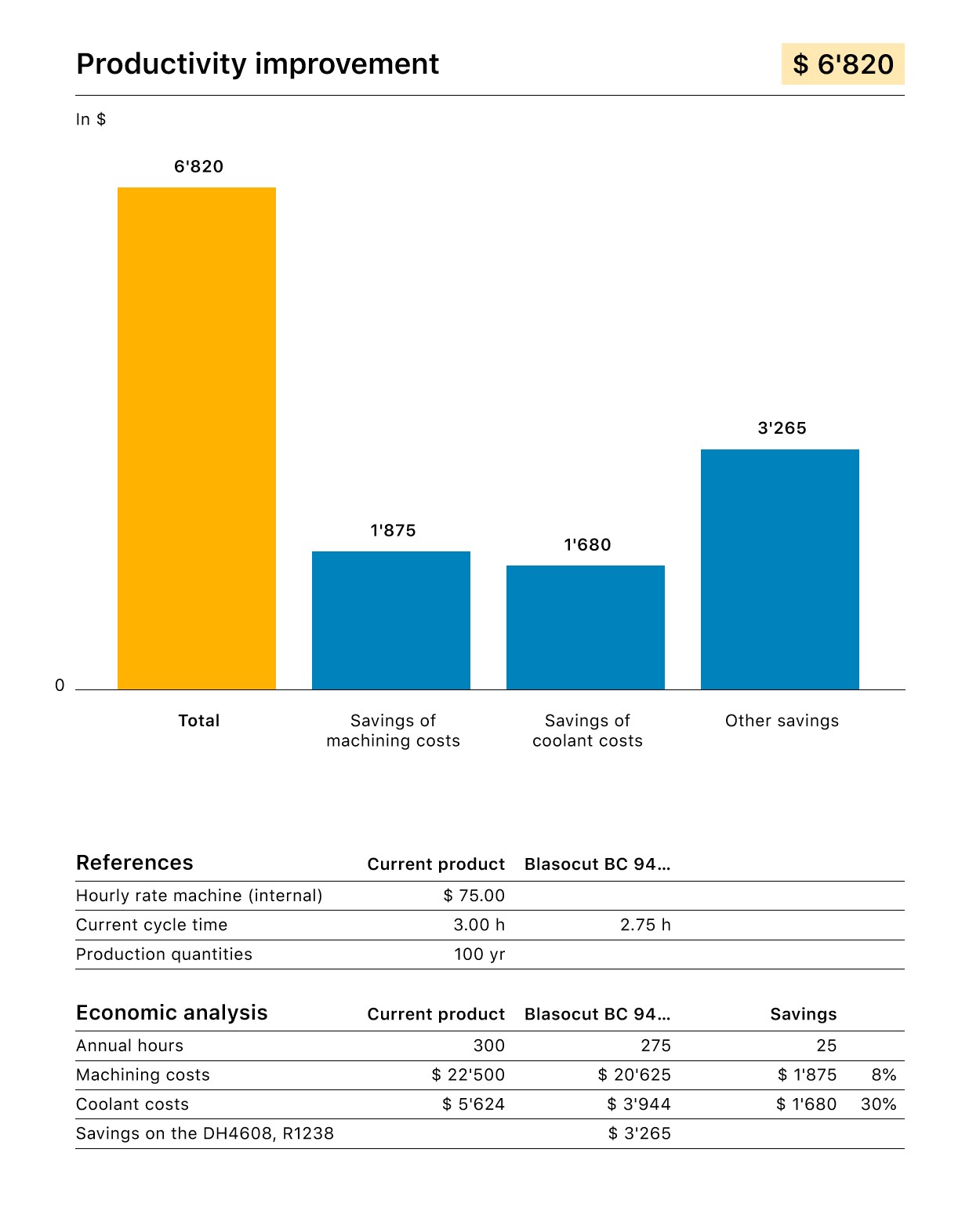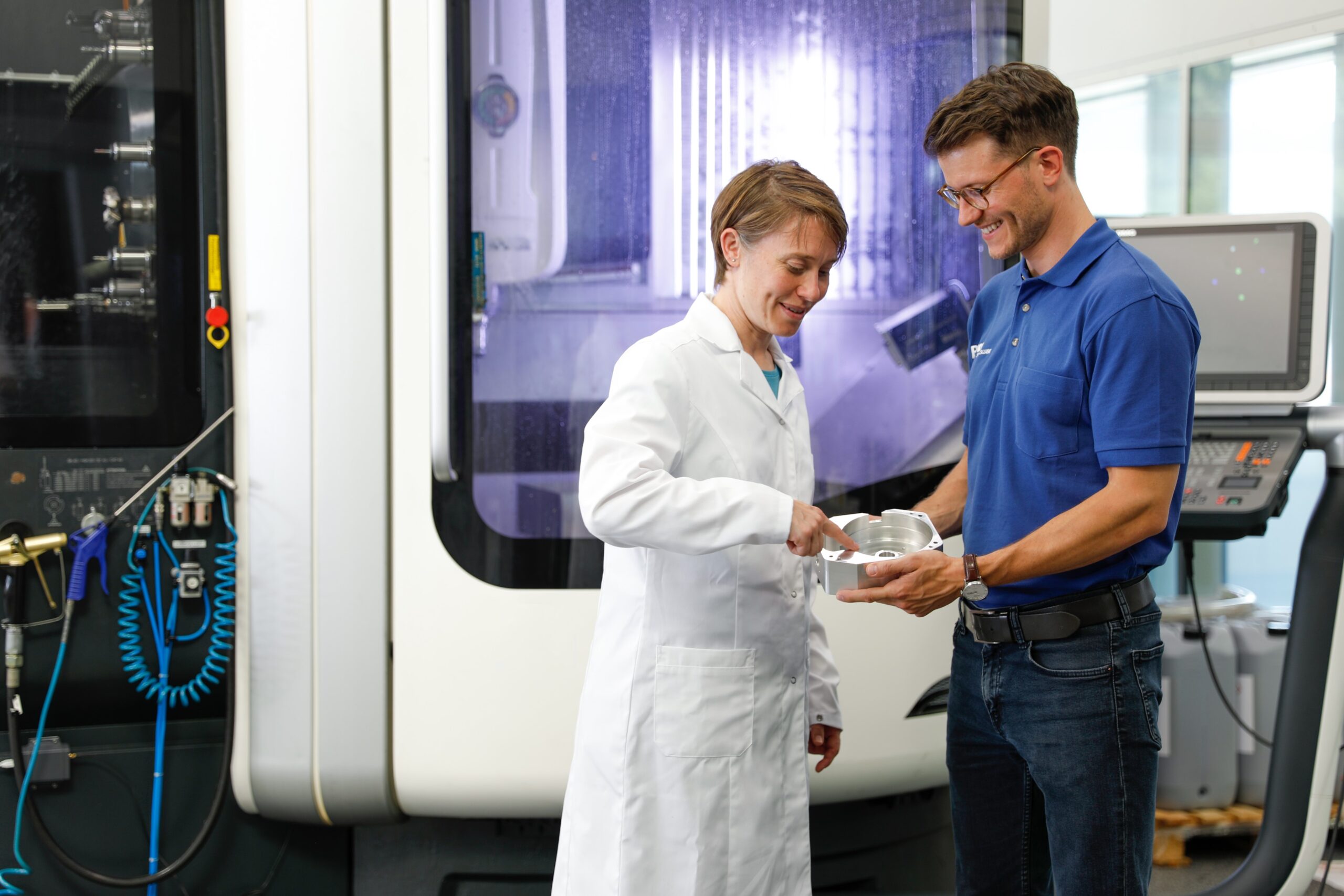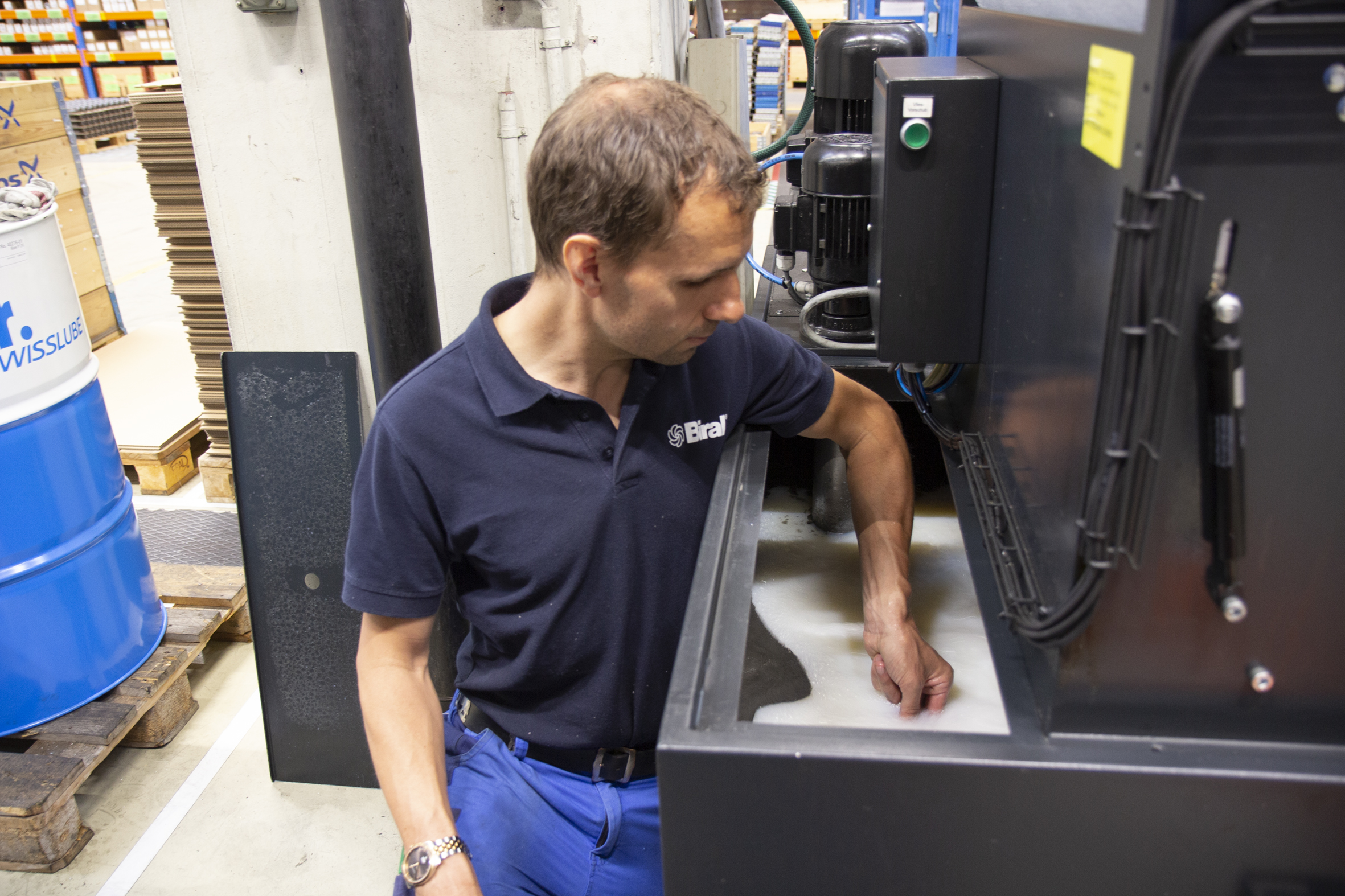The leverage effect of metalworking fluids.
The right metalworking fluid does a lot more than you think. It is an often-overlooked strategic tool for manufacturers. Coolant should be considered an investment to optimize a manufacturing process.
The leverage effect of metalworking fluids
The cost of the metalworking fluid is a small fraction of the total investment into any manufacturing process. At the same time, it has an outsized influence because it touches virtually everything in the shop, from tools to machines to people.
The idea that this minor player – comprising only around 0.5 percent of the total investment – influences the success of the other 99.5 percent is what we call the “leverage effect” of metalworking fluids.
Everyone understands the importance of having the right CNC machine, choosing the best cutting tools for the application, figuring out the workholding and assigning the right operator to the job. These are the big costs attributed to manufacturing any part, along with an overhead burden such as building and utilities, or indirect costs like scrap.

Unavoidable cost or missed opportunity?
With so many decisions, coolant can be an afterthought and many shops do not take time to consider the critical importance of choosing the right one for their application. Too often it is thought of as a commodity product and a necessary evil, on par with unavoidable costs like paper products or cleaning supplies.
Equally as important as the actual performance of coolant in the machine, at the point where the tool meets the workpiece, is the wide-ranging impact on other major cost centers in the shop; the 99.5 percent. It is no less important than a drill or an endmill in its usefulness, but perhaps more important considering the wide-reaching, but sometimes unnoticed, impact on the rest of the shop.
If you can leverage that 0.5 percent by applying the best metalworking fluid for the process, it is possible to extend tool life, increase cutting speeds, improve process stability, or reduce hours on machine maintenance. The return on investment is clearly measurable, and the savings is multiplied by the number of machines in your shop. That is a significant leverage effect.
Consider an example of a multi-machine cell producing similar components. Optimizing the metalcutting fluid to shorten cycle times and improve machine availability across three CNC machines could eliminate or delay the need to invest in fourth machine.
Identify measurable improvement goals
Which metalworking fluid is the right choice depends on factors specific to the shop environment, the machining process and the material mix. Different types of fluid can deliver different benefits.
Common improvement goals might include:
– Reduce tool wear to extend tool life
– Visibly and measurably improve part finish
– Support faster cutting speeds for shorter cycle times
– Reduce maintenance time and disposal costs
For example, recently an Illinois machinery manufacturer was prompted to review their choice of metalworking fluid when they noticed green staining and peeling paint on a Haas HMC. Resolving this maintenance problem was the primary motivation, but management set an additional improvement goal to extend tool life by 10 to 20 percent.
After a careful analysis and tests with a more suitable product – in this case Blasocut BC940SW – the maintenance issue was resolved and tool life was increased by 27 percent. Additionally, the amount of coolant required to top off the sump was reduced by 30 percent. Finally, selecting the best coolant for alloyed steel allowed a greater depth of cut and therefore a cycle time reduction of more than 8 percent. It is a perfect example of the leverage effect of the metalworking fluid on the process, the equipment and the shop.
In another example, a manufacturer of hand tools looked to change their cutting oil to extend tool life in HSS and improve cleanliness in the shop. The cost of the new product, Blasomill 10, was twice the cost of the old product on a per-gallon basis. The consumption, however, was lower by one third. Higher price per unit but less to purchase up front, and less to dispose of later. Most importantly for this company, tool life was increased by 20 percent, with the greatest improvement shown on the highest cost tools. The total annual savings was more than $185,000 net on an annual basis for a $22,000 investment in the right metalworking fluid.

By selecting the right coolant for the application, an Illinois machinery manufacturer extended tool life, cut cycle time and reduced coolant consumption for an annual savings of nearly $7,000 on a single machine.

By selecting the right coolant for the application, an Illinois machinery manufacturer extended tool life, cut cycle time and reduced coolant consumption for an annual savings of nearly $7,000 on a single machine.
Start with situational analysis
There are specific steps to reliably estimate the potential cost improvements outlined in the examples above. The first is a situational analysis which included a review of the local water quality, types of materials, cutting processes and specific machine capabilities such as high-pressure systems.
Water quality varies widely depending on the source and location. It is extremely important to the success of any water-miscible coolant and should be tested and adjusted if needed. Achieving the right degree of water hardness will have a significant effect on emulsion stability and sump life.
Then it is time for a real-world test to prove out the proposed process and measure the results and cost savings. Admittedly, testing a new metalworking fluid is not as easy as trying out a new end mill. The process can require hours of downtime to empty the sump, thoroughly clean the machine and re-fill with a new product.
Blaser Swisslube maintains machining laboratories with a wide range of CNC machines to make this process easier. The lab equipment is used to prove out new products and to run tests that closely match conditions in the customer’s shop. The staff draws on combined experience from a wide range of manufacturing environments, plus machine know-how and process and materials expertise to suggest the best solutions. Lab-quality data shows the potential savings before any maintenance work begins.
Improve employee satisfaction
The environmental benefits of selecting the right metalworking fluid are somewhat less quantifiable, but no less important. Operators regularly expose their skin to coolant and the aerosols can be inhaled. High-quality metalworking fluids are made only from raw materials which will not harm people or the environment. They are highly stable emulsions with the correct pH range and are free of bactericides to protect employees from allergies and skin irritation. This means a cleaner shop and machines, improved air quality, and better human compatibility. The result is greater employee satisfaction, which is perhaps the greatest leverage effect of all.

The machining laboratories at Blaser Swisslube are equipped with a wide range of CNC machines to run tests and document potential savings and benefits of choosing the right metalworking fluid.

High-quality metalworking fluids are made only from raw materials which will not harm people or the environment.